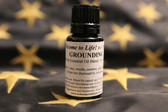 Loading... Please wait...
Loading... Please wait...- Home
- Library
Categories
Popular Brands
Library
Library
There are many books and websites detailing a variety of uses for essential oils available on the market. We have not completed anything close to exhaustive research of these many sources. However, we have discovered that we favor different formats for different essential oil questions.
With that in mind, here are several source reviews with a short annotation about how we find them most useful.
THE DIRECTORY OF ESSENTIAL OILS by Wanda Sellar: This is a great introductory book, arranging the oils alphabetically. Each oil is described according to the same "categories" of information, making it easy to compare one oil with another. The descriptive oil categories are Aroma, Features, History & Myth, Chemical Constituents, Properties, Precautions, Mind, Body, Effect on Skin, and Blends. The descriptions are short enough to be interesting, but lengthy enough to be valuable.
AROMATHERAPY: AN A-Z by Patricia Davis: This book is more like an encyclopedia and includes many entries besides the names of essential oils. This is perfect for people seeking a possible answer to a variety of health issues. Some representative entries are Compresses, Concrete (a term to designate "an aromatic substance extracted from plants by solvents"), Constipation, Contagious Diseases, Gout, Grapefruit, and Grief. Though the entries are not uniform in their structure, they are very thorough.
THE ESSENTIAL OILS HANDBOOK by Jennie Harding: This book arranges the oils by their primary uses--categories such as Muscle Treats, Skin Enhancers, Easy Breathers, and Immune Boosters (only a partial list). This means that the individual oils are much more difficult to look up, but the index is well-done, putting the primary descriptive pages in bold and ancillary references in regular type. The descriptions of each oil are much more scanty than the previous books, offering a description as well as categories like Safety First, Supporting the Spirit, Easing the Mind, and Healing the Body. However, the great strength of this book lies in its recipes, which neither of the other books even approach. There is a thorough background given in this book about essential oils which is great for a new essential oil learner.
ESSENTIAL OIL SAFETY, 2ND EDITION by Robert Tisserand and Rodney Young: This book is the Bible of Essential Oil safety. It is quite expensive (around $100), but it is worth every penny. The information contained inside is thorough, even exhaustive. It describes essential oil composition, toxicity, reviews each of the body systems (respiratory, cardiovascular, urinary, digestive, nervous, reproductive, and immune) and then lists each essential oil with all pertinent "REAL" data so that you can make truly informed decisions about how to use essential oils. Though this is a textbook, and is therefore not tailored to the casual consumer, I find it a very valuable addition to our library and the most competent source I have seen anywhere.
On the Web: The National Association for Holistic Aromatherapy at www.naha.org: This is a good website to start with for online information because the association DOES NOT SELL essential oils. Any information you receive from those who sell oils is bound to be slanted towards sales and marketing.



